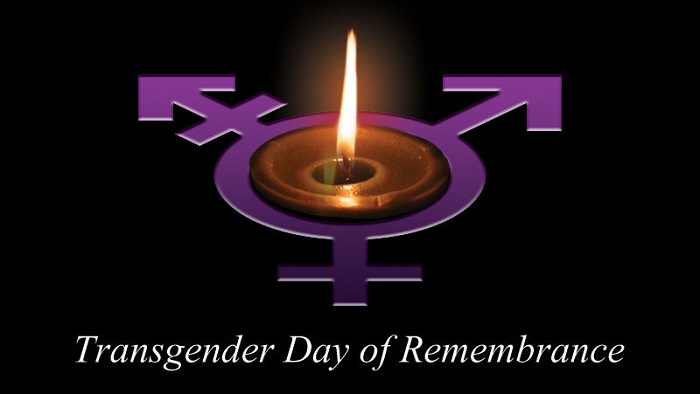November 20th, the Transgender Day of Remembrance, was instituted in 1999 as a memorial – a time to remember those hurt or killed, particularly in the past twelve months, by transphobic violence. However, in recent years, it has shifted into a day of action – a time to look for ways to create a positive difference for trans people.
Transgender people are often misunderstood – sometimes even by others in the LGBT community. A transgender person is simply someone whose self-identity or means of gender expression don’t match their sex assignment at birth. There may be no visible ‘cue’ for this, and like most of the LGBT spectrum, this is not a choice or a fad. The experience of a person’s gender identity is innate. But there is a subset of transgender people, transsexuals, who wish to wholly transform into their inborn gender. Outsiders often mistake this subset for what all transgender people are and experience. But for transsexuals, the desire does introduce an element of choice; in whether it’s worthwhile for a person’s wellbeing to undergo part or all of the transitioning process. How far one choose to go, in clothing, hormone therapy, or surgery. For many transgender people, these choices are acts not just of identity, but of bravery.
Unfortunately, in addition to being misunderstood, transgender people are not well protected in many parts of the country. Because transgender identity is fairly rare, affecting only about 0.6% of the U.S. population, it can be hard for trans people in rural areas to find community, or counselors who have enough experience with their needs to help, even from those who mean well. And legal protections vary greatly by state. Several organizations can help you make sense of this – the National Center for Transgender Equality covers many federal cases that have shaped (or failed to shape) protections for trans people, and the Transgender Law Center looks closely at emerging cases and issues at the state level. And if you are in need of help to file a case, change your gender on a birth certificate or driver’s license, or pursue other legal actions of your own, the Indiana Transgender Network legal resources can connect you with the right people to help.
There’s support on the IU East campus, as well. Counselors are available, as well as student groups such as the LGBTQS Alliance (who are holding fundraisers at IHOP on November 16th and November 27th). Faculty and staff in every building have also taken “Safe Zone” training to provide safe, supportive, and affirming listeners for any transgender student who wants to discuss their experiences and concerns – just look for the Safe Zone decal on the office door.
The library offers a lot of materials, as well. We have a LibGuide for national and local resources, and many of our databases offer high-quality scholarly information, including a few specialized ones like Gender Watch. And our book collection features such titles as Transgender History by Susan Stryker, TransForming Gender: Transgender Practices of Identity, Intimacy and Care by Sally Hines, The Nearest Exit May Be Behind You by S. Bear Bergman, Trans/Portraits: Voices from Transgender Communities by Jackson Wright Shultz, Whipping Girl: A Transsexual Woman on Sexism and the Scapegoating of Femininity by Julia Serano, Transgender Voices: Beyond Women and Men by Lori B. Girshick, Transgender Communication Studies: Histories, Trends, and Trajectories by Jamie C. Capuzza, Blending Genders: Social Aspects of Cross-Dressing and Sex Changing by Richard Ekins, and Transgender Rights and Politics: Groups, Issue Framing, and Policy Adoption by Jami K. Taylor.
Need help finding resources or contacts? Ask us at iueref@iue.edu!



